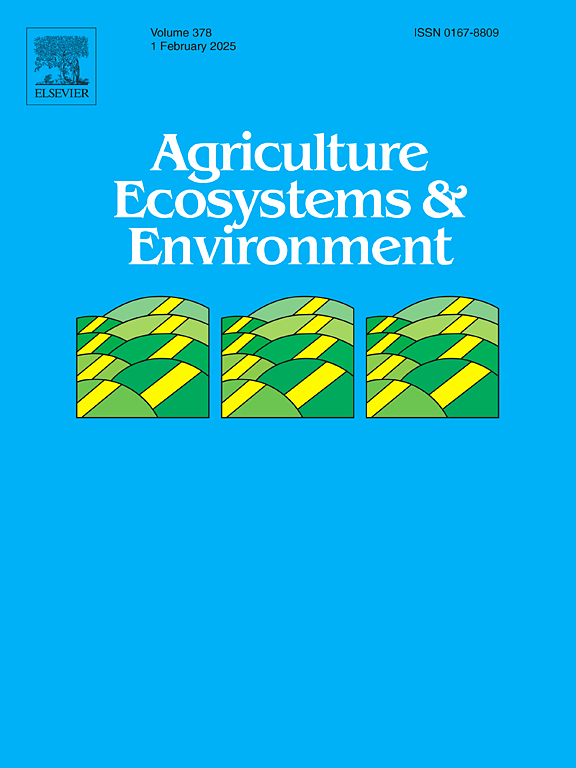Ecological restoration of field margins enhances biodiversity and multiple ecosystem services in rice agroecosystems
IF 6
1区 农林科学
Q1 AGRICULTURE, MULTIDISCIPLINARY
引用次数: 0
Abstract
Ecological restoration of non-productive agricultural areas such as field margins has been identified as a key priority to enhance biodiversity and promote multiple ecosystem services within agroecosystems. Field margin restoration is especially important in rice (Oryza sativa, L), a globally important crop which occupies around 15 % of world cropland surface. Even though assessment of how ecosystem service multifunctionality varies across different restoration strategies is scarce. Here, by using a 3-year field scale experiment, we evaluated how different restoration strategies (i.e., hedgerows, flower strips and passive restoration) contribute to ecosystem service multifunctionality in rice farming. We focused on the simultaneous provision of biodiversity enhancement, pest and weed control, mitigation of invasive species impact, and soil protection. We found that all restoration strategies substantially increased multifunctionality when compared to non-restored margins, with improved plant and natural enemy diversity, reduced weed abundance, enhanced protection against the invasive red swamp crawfish, and decreased soil erosion. Multifunctionality was similar across restoration strategies, yet the passive spontaneous restoration emerged as the most economically feasible. Overall, our results underscore the value of restoring non-productive areas such as field margins to promote rice multifunctional landscapes. Specifically, passive restoration strategies offer a promising approach to enhance multiple ecosystem services while remaining cost-effective, supporting both biodiversity conservation and sustainable agricultural production.
求助全文
约1分钟内获得全文
求助全文
来源期刊

Agriculture, Ecosystems & Environment
环境科学-环境科学
CiteScore
11.70
自引率
9.10%
发文量
392
审稿时长
26 days
期刊介绍:
Agriculture, Ecosystems and Environment publishes scientific articles dealing with the interface between agroecosystems and the natural environment, specifically how agriculture influences the environment and how changes in that environment impact agroecosystems. Preference is given to papers from experimental and observational research at the field, system or landscape level, from studies that enhance our understanding of processes using data-based biophysical modelling, and papers that bridge scientific disciplines and integrate knowledge. All papers should be placed in an international or wide comparative context.
 求助内容:
求助内容: 应助结果提醒方式:
应助结果提醒方式:


